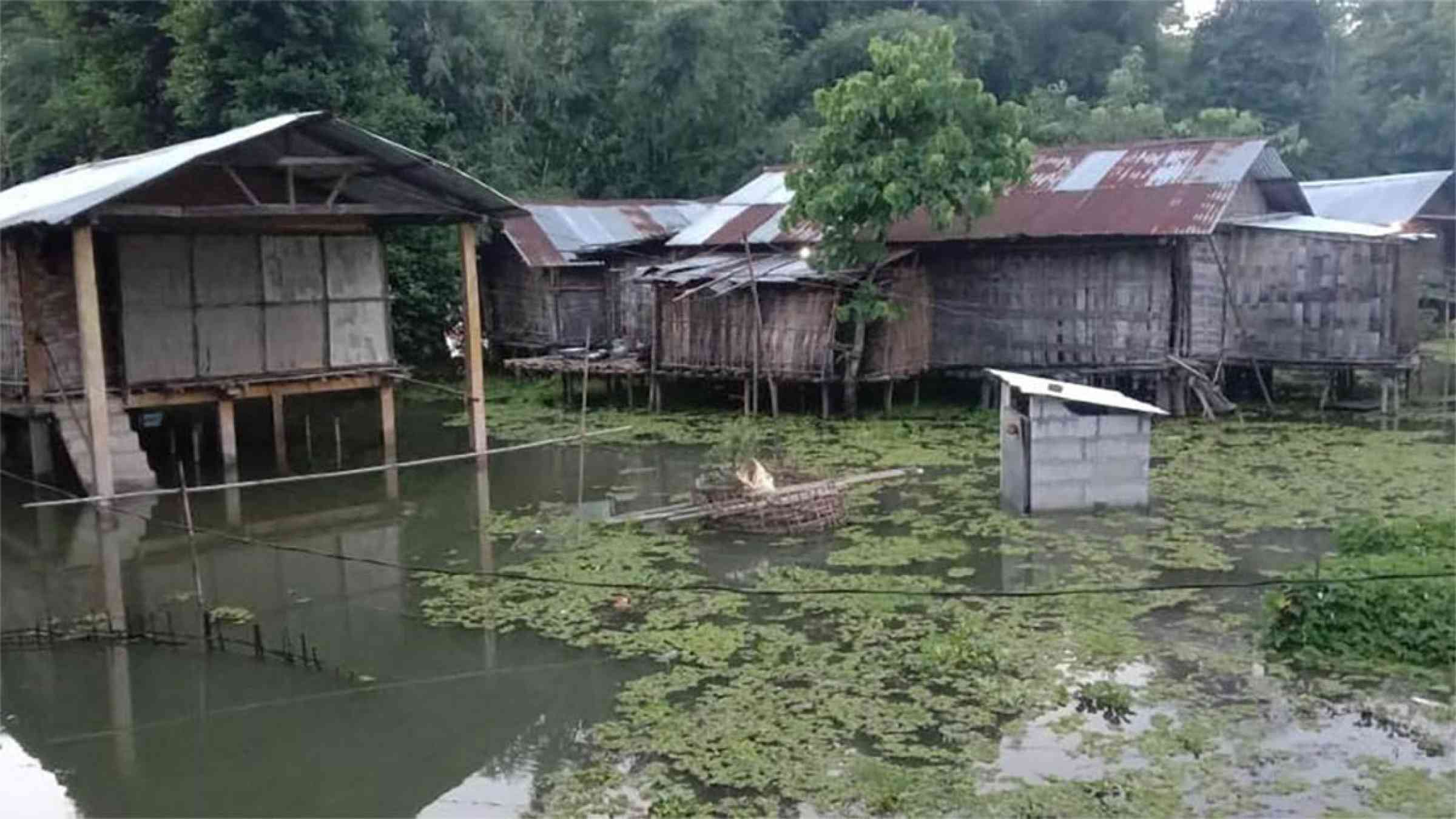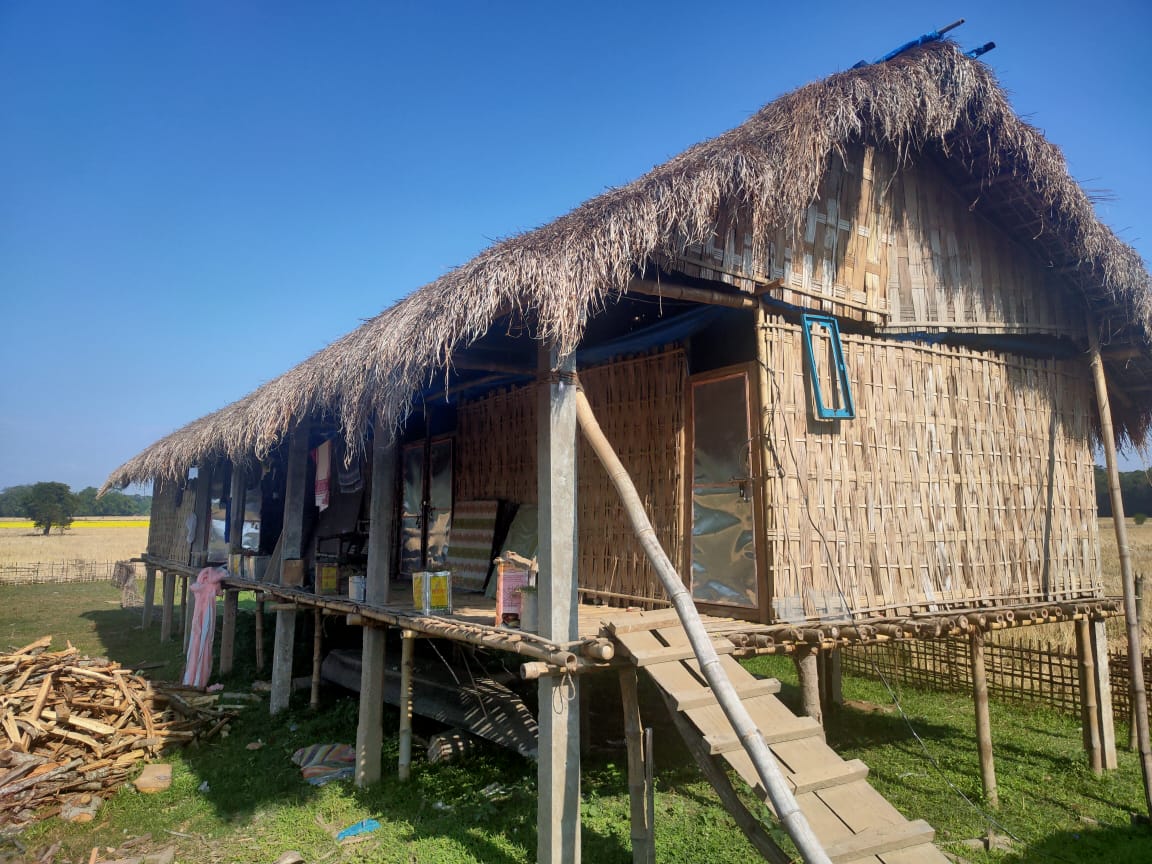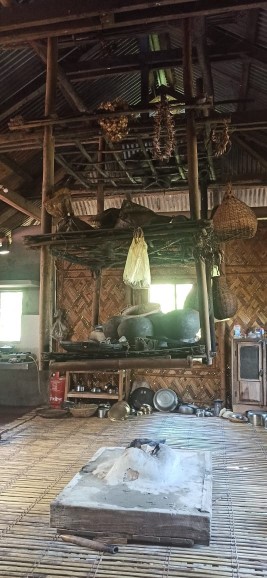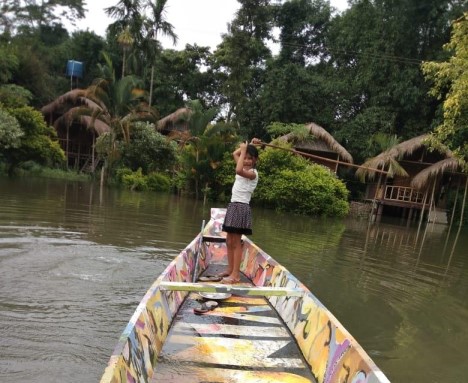India’s Mising community seeks to expand its indigenous adaptation practices in response to climate change

Floods in the Brahmaputra river, one of the largest rivers in the world, cause massive loss of lives, livestock, crops, and properties every year in India’s northeast. Originating in the Tibetan Himalayas, the river weaves its way through India and Bangladesh before emptying into the Bay of Bengal. The highly-braided river is often dubbed a ‘moving ocean’ due to its huge expanse at some points, even touching 18 km. The mighty Brahmaputra is the lifeline of India’s northeastern region and is integral to its culture and identity.
The Mising community, an indigenous community in India's northeast region that has lived close to the river for centuries, has turned to architectural innovations to adapt to the annual flood hazard and reduce disaster risk.
The community of 700,000 people, primarily residing in the northeast Indian states of Assam and Arunachal Pradesh, has learned to co-exist with floods for centuries. Migrating from the Eastern Himalayas in the 14th century to settle near the banks of the Brahmaputra and its tributaries, the Misings in Assam call some of the most flood-prone areas of the state their home. One of these areas is the Majuli river island, the world’s largest such island, located in the mid-stream of the Brahmaputra river in Assam. The island, which in 2016 was named an island district, is shrinking due to floods and bank erosion caused by the river and its tributaries.

A typical Mising house, called Kare Okum (or chang ghar in Assamese), is an innovative way to keep floodwaters at bay as it is built on a raised platform supported by bamboo stilts at least 10 feet tall. Mr. Krishna Pegu, a resident of Kulamua village in the Majuli, says the chang ghar has multiple layers, from the floor to the roof, each serving a specific purpose.

“Above the floor, we have the Meram, which is our fireplace. Above the Meram are two shelves made of bamboo called Perab and Rabbong, where we store food items like fish and meat, and Apong (a variety of rice beer prepared by the Mising community) in clay pots. Above that, at the ceiling level, is another layer called Kumbang where vegetables can be stored. We also have a balcony-like extension outside the house called Tunggeng where people can sit and also store their grains,” explained Mr. Pegu.
Mr. Haren Narah, a resident of Majuli, says the Misings have an intrinsic relationship with the floods. “We can predict the extent of the flood and prepare accordingly. Our houses are built in a way that their elevation can be changed depending upon the floods in the previous years. So, if the water level is high in a year, the houses will be more elevated the next year.”
The Mising community uses wooden rafts called Ollung to wade through floodwaters and reach the relief camps if needed. These rafts are secured under the stilt houses.
Mr. Partha Jyoti Das, head of the Water Climate and Hazard (WATCH) Programme of the Assam-based non-government organization (NGO) Aaranyak which works on biodiversity and the environment, says that the Mising community has adapted to floods better than many other communities of Assam. “It was a compulsion for them because their habitation is near a river. They can understand the behavior of rivers very well,” said Mr. Das.
However, in recent decades rainfall patterns in the northeast Indian region have become erratic. This has challenged the centuries-old coping mechanism of the Mising community.
“A change in the pattern of rainfall in northeast India has been observed from 1980 onwards. Because of changes in the rainfall patterns, the community’s traditional coping mechanism has become less effective. They have been observing the rainfall patterns for centuries -- how it increases, decreases, and fluctuates. They have passed on the knowledge to the subsequent generations. They know that in a particular season, rainfall will occur,” said Mr. Das.
“But because of climatic and anthropogenic factors, that pattern is changing. Changes don’t happen overnight. When there should be rainfall, there is no rain, and when there should be moderate rainfall, there is heavy rain causing flash floods. The monsoon season is notorious for its vagaries. Even without climate change, the monsoon is unpredictable. Slowly, we will see more drought years in Assam and some other parts of northeast India. Rainfall will be deficient by 30-50 per cent over the years compared to its normal average rate,” said Mr. Das.
For example, this year Majuli received scanty rains, which has worried the 600-odd residents of Kulamua village who are almost entirely dependent on agriculture for their livelihood. “Farmers are facing problems this year. Crops are dying because of lack of rainfall,” said Kulamua resident Mr. Krishna Pegu.
Assam, among the 12 states in the Indian Himalayan Region, is the most vulnerable to climate change, states an Indian government report. With around 40 per cent of its total area falling in the flood-prone zone, Assam is considered one of the most flood-affected regions of India.
Mr. Manoranjan Pegu, a Mising community activist, said that while their flood adaptation techniques have not become unsuitable for the current floods, it has become more expensive and they need newer innovations.
Mr. Krishna Pegu corroborates Manoranjan’s assertion. “Earlier, a house made of bamboo would cost INR 50,000 to INR 60,000 because the bamboo and wood both belonged to us. Now, we have to buy bamboo and wood [because of a ban on logging] which has made the houses expensive. In the past, the entire house was built with bamboo, but now concrete is used which has also raised costs,” said Mr. Krishna Pegu.
Mr. Manoranjan Pegu pointed out that their adaptation techniques such as constructing a chang ghar helps only when the floodwaters do not damage a house. “Nowadays, during flash floods, on various occasions dykes get breached or small tributaries change course, and then entire houses are swept away. In such a scenario, adaptation methods don’t apply as there is little time to prepare. Moreover, in the past, wood could be easily found and everyone knew how to make a boat by themselves. With logging banned, forest cover decreasing and with the traditional skills not being passed on, our adaptation has become harder too,” said Mr. Manoranjan Pegu.
Now Mising people go for cheaper alternatives like banana boats (rafts fashioned out of banana trunks) for movement during floods. “However, our adaptation methods still have a lot to offer, as the focus is not to fight or tame nature, but to live with it, and improve community preparedness,” said Mr. Manoranjan Pegu.
Ms. Momee Pegu, a Mising community organic farmer, and entrepreneur based in Majuli, emphasized that while adapting to the annual floods is essential for the community, they also have to contend with erosion. Climate-resilient architecture will also have to factor in the erosion of the river island. “I think in Majuli erosion is a bigger threat than floods because erosion submerges everything,” Ms. Pegu said.

Designing climate-resilient habitats is among six priority areas in the Assam State Disaster Management Plan. The state disaster management plan was aligned with the strategy outlined in India’s National Action Plan on Climate Change. However, a close reading shows that while the state’s plan analyses the disaster vulnerability of various kinds of housing, it overlooks the development of resilient structures.
The chang ghar design is also a component of India’s Pradhan Mantri Awas Yojana (PMAY) scheme which promises ‘Housing for All by 2022’ for its beneficiaries. However, experts working on local architecture in Assam pointed out challenges in the availability of the chang ghars provided to flood-affected people under the scheme.
“While the budgetary estimate and engineering design of the houses under the Indian government’s housing scheme are good, not many people can avail their benefits. If a village applies for the PMAY houses, ultimately only 3-4 families will get them,” said Mr. Tirtha Saikia, joint director of North-East Affected Area Development Society (NEADS), a volunteer-based NGO.
The organization is working on the construction of a hybrid form of chang ghar, that is more durable, with financial support provided by another NGO, Sustainable Environment and Ecological Development Society (SEEDS). The traditional chang ghars are built by wedging bamboo poles into a three-and-a-half-foot pit. But once the bamboo poles rot and weaken, the houses get swept away in the floods. Currently, concrete, cement, and sand are used to reinforce the strength of the structure.
“This system has worked, and my own house built in this manner has survived three flood seasons,” said Mr. Umananda Pathori, a Mising resident of Nikori Gaon village in Golaghat district of Assam. Mr. Pathori, who leads the community-driven building process for NEADS, however, adds that even if the house survives the floods, hygiene and sanitation issues plague the Mising community every monsoon.
Mr. Saikia feels the government could incorporate traditional Mising techniques in the sectors of sanitation and education too. During floods, most schools in the affected areas are submerged and classes are hampered during those months. “Building some schools in the traditional model won't be a bad idea,” adds Mr. Saikia.

